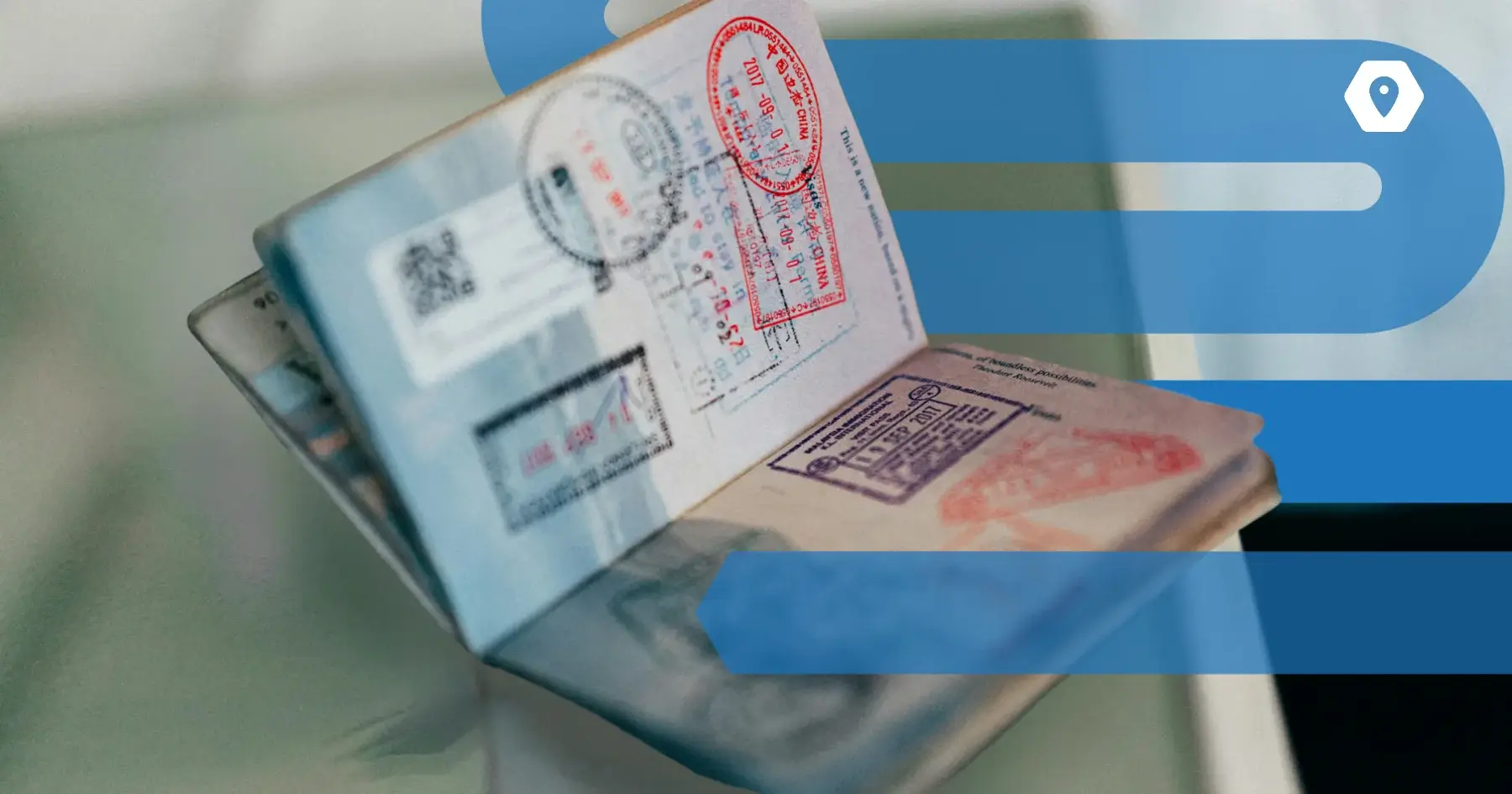- During the first 12 months of holding an EU Blue Card in Germany, employees must obtain approval from local immigration authorities before switching employers. The new job must meet salary thresholds (€48,300 or €43,759.80 for shortage occupations) and align with their qualifications. After 12 months, employees can change jobs freely without notifying authorities.
- The EU Blue Card allows intra-EU mobility after 12 months of continuous employment in Germany. Employees can move to other EU countries using the Blue Card system but must notify local immigration services within one month of arrival.
- If an employee loses their job, the EU Blue Card remains valid for three months to allow job searching, provided authorities are informed of the unemployment status within that period.
- HR professionals should facilitate employer changes to retain talent, ensure compliance with immigration regulations, and minimize disruption. Understanding the EU Blue Card framework helps support employees’ career mobility while maintaining legal compliance.
As an HR professional in Germany, one may encounter situations where their non-EU employees holding an EU Blue Card (Blaue Karte EU) wish to switch employers. Understanding the process, eligibility, requirements, and necessary documentation is critical to ensuring a smooth transition for the workforce while staying compliant with German immigration laws.
This guide provides everything you need to know about managing a change of employers (Arbeitgeberwechsel) under the EU Blue Card framework in Germany as of 2025.
What is the EU Blue Card?
The EU Blue Card is a residence and work permit designed for highly skilled non-EU nationals to live and work in Germany and other EU countries (excluding Denmark and Ireland). Governed by Section 18g of the Residence Act (AufenthG), it targets professionals with university degrees or comparable qualifications and a job offer meeting specific salary thresholds. For HR teams, facilitating an Arbeitgeberwechsel ensures the employee retains their legal status while transitioning to a new role.
Let us understand more about the various employment scenarios and their requirements.
1. Change of Employer Within Germany
1a) Within the First 12 Months
Changing employers during the first year of holding an EU Blue Card requires careful compliance with immigration laws:
- Approval Requirement: Employee must obtain authorization from the local immigration authorities (Ausländerbehörde). The authorities will assess whether their new job meets the criteria for the EU Blue Card, such as salary thresholds and relevance to their qualifications.
- Notification Timeline: Employee must notify the authorities about the change within 12 months of employment. Authorities have up to 30 days to approve or reject the request.
- Qualifications and Job Match:
- The new position must correspond to their academic qualifications (e.g., a university degree recognized in Germany) or, for IT professionals, at least three years of relevant experience within the last seven year.
- The job must be in a skilled profession, not self-employment.
- Salary Threshold: As of 2025, the new job must offer a gross annual salary of at least €48,300 for most professions. For bottleneck professions (Engpassberufe) like IT, manufacturing, or healthcare, the threshold is €43,759.80, subject to approval by the Federal Employment Agency (Bundesagentur für Arbeit).
1b) After 12 Months
Once the employee has worked for 12 months:
- They can change employers freely without notifying immigration authorities.
- This flexibility simplifies career transitions and aligns with recent updates to German immigration laws
For detailed eligibility criteria, refer to the official Make it in Germany portal.
2. Change of Employer (Relocating) Within the EU
The EU Blue Card enables intra-EU mobility after 12 months of continuous employment in Germany. Employee can move to another EU country under the Blue Card system but must notify local immigration services within one month of arrival.
3. Unemployment Provisions
If the employee loses their job:
- The EU Blue Card remains valid for three months after their employment ends. This grace period allows them to find new work without losing residency status.
- It is essential to inform immigration authorities about their unemployment during this time.
Here's a quick and easy recap of all the above scenarios as a table.
Application Process for Change of Employer (Arbeitgeberwechsel)
Here’s a step-by-step process to guide the employee through an Arbeitgeberwechsel:
Documents Needed for Changing Employers
Prepare the following documents to support the application:
- Valid Passport: A copy of the employee’s passport.
- Current EU Blue Card: Include the residence permit and Zusatzblatt.
- New Employment Contract: A signed contract or job offer detailing position, salary, and duration (minimum six months).
- Form "Erklärung zum Beschäftigungsverhältnis": This job description form, filled out and signed by the new employer, outlines the role and conditions. Download it from the BAMF website.
- Proof of Qualifications: University degree certificate or, for IT professionals, a CV and evidence of three years’ experience.
- Health Insurance Proof: Documentation of coverage in Germany.
- Biometric Photo: A recent 35mm x 45mm photo (required only for in-person visits).
Additional documents may be requested by the Ausländerbehörde, so check with the local office. For a comprehensive list, visit BAMF - EU Blue Card.
Important Things to Note
- For EU Blue Card types, like MINT, IT, and young professionals, the authorities have the right to suspend the change for up to 30 days temporarily; if it is not rejected within the mentioned period, then it will automatically be accepted.
- If the new job does not meet the requirements, the talent may be eligible for a different residence permit or will receive the opportunity to search for a better job offer.
- Usually, holders of EU Blue Card with a recognized degree are not affected by the suspension of basic criteria like the current Blue Card EU salary threshold and the relation of the degree and the employment are met.
- Changing employers doesn’t typically affect eligibility for a settlement permit after 27 months (or 21 months with B1 German proficiency), as long as employment remains continuous.
Why Arbeitgeberwechsel Matters for HR
Facilitating a smooth Arbeitgeberwechsel retains talent, ensures compliance with German immigration law, and minimizes disruptions. By understanding the EU Blue Card rules, employers can support their employees’ career mobility while maintaining a legally sound HR process.
For the latest updates, consult the Federal Office for Migration and Refugees (BAMF) or European Commission Immigration Portal.
Summary
Changing employers with an EU Blue Card in Germany requires careful adherence to regulations, especially during the first 12 months. After this period, job transitions become significantly easier. The program also supports intra-EU mobility and provides a safety net in cases of unemployment. Understanding these rules ensures compliance and helps professionals make informed career decisions in Germany.
By following these guidelines, one can navigate employment changes seamlessly while maximizing the benefits of the EU Blue Card.
Common questions around Change of employer process
For Change of employer process, EU blue card holder can switch jobs without notifying the immigration authorities after 12 months of obtaining blue card, provided the new role still qualifies for the Blue Card.
For Change of employer process, if an EU Blue Card holder changes jobs within the first 12 months, they must:
- Notify the local immigration authorities of the new job.
- Submit details, such as the new employment contract, to confirm the position meets the Blue Card’s standards.
- Await verification from the authorities, which typically takes up to 30 days.
- If no response is received within this period, the change is generally considered approved.
For Change of employer process, when notifying the immigration authorities within the first 12 months, the following documents are typically required:
- ✅ A copy of the new employment contract.
- ✅ Evidence that the new job meets the salary and qualification requirements (e.g., job description or employer confirmation).
- ✅ Any additional forms requested by the local authorities.
For Change of employer process, there is no mandatory waiting period. EU Blue Card holders can change jobs at any time. However, if the change occurs within the first 12 months, they must follow the notification and verification process.
For Change of employer process, family members (spouse and dependent children) can stay in Germany and retain their rights—such as access to work, healthcare, and education—as long as the Blue Card holder remains employed in a qualifying position. A job change does not affect their status, provided the Blue Card holder maintains eligibility.


.svg)











.svg)
